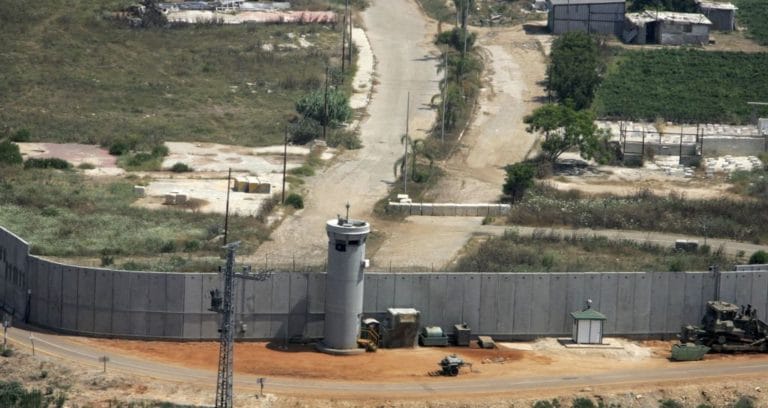
When it comes to the tough issues, I say: bring it on. The more complicated the topic, the more intrigued I am. The more complex an issue, the more engaged I become. The more controversial an area of discipline, the more I want to focus on it. These topics are like magnets for me.
As a Jewish educator, I relish the opportunity to study the toughest topics with my students. Asking the tough questions, allowing students to explore on their own, and then cultivating clarity on each issue for my students. That’s my educational sustenance.
- Navigating questions of Bible criticism? No problem.
- When universal morality and divine command are at odds with one another, which one yields? I’ve got this one.
- How to deal with the question of the chosen people doctrine? Let’s do this.
- How can we make sense of evil, suffering, and pain in this world and reconcile it with an all-powerful, all-good God (i.e., questions of theodicy)? That’s my jam.
And yet, for the first seven years of my educational career, I refused to teach about one topic: Israel’s settlements in Judea and Samaria, also referred to as the West Bank.
Why? Simple. I was afraid. I admit it. I was afraid for a number of reasons. I was afraid that I could anger a right-wing stakeholder or a left-wing donor. I was afraid that I simply did not know much more than others about the topic. I was afraid that I might unwittingly manipulate the emotions of my students to be in line with my perspectives. Speaking personally, that is why our five-part series on the settlements is so important.
- What are the Israeli Settlements?
- What is the Jewish connection to the land?
- Who are the Israeli settlers?
- What is the Palestinian experience in the West Bank?
- What are the next steps in the Israeli-Palestinian Peace Process?
When our team produces these videos and develops these educational resources, YOU are on our minds.
So, if you’re reading the news, wondering about annexation, and what it all means, we’ve got you covered as my incredible colleague Avi Posen unpacks it all for you using our resources.
Don’t be like the younger version of me who was afraid to teach these topics. Use these videos and educational resources and make sure each of your students has the self-confidence to own their story as well.
What Happened?
Prime Minister Benjamin Netanyahu and Blue and White chairman Benny Gantz plan to swear in their new government in the coming days, which has been met with both joy and protest, with the Israeli Supreme Court approving the legality of the coalition deal amid Netanyahu’s indictment. The recent unity deal signed by Netanyahu and Gantz paves the way for Netanyahu to initiate legislation to annex large parts of the West Bank starting July 1, 2020.
In an interview with Israel newspaper Israel Hayom, US Ambassador to Israel David Friedman said that “applying Israeli sovereignty in Judea and Samaria is Israel’s decision” and that the United States government is preparing to acknowledge Israeli application of sovereignty in Judea and Samaria, as well as in the Jordan Valley, as of July 1. A State Department spokesperson said that the US would be willing to recognize these Israeli actions on two conditions: Israel must be willing to negotiate with the Palestinans, and the annexation must fit within President Donald Trump’s peace plan.
Why Does This Matter?
In 1967, Israel captured large territories in the Six Day War: The Golan Heights from Syria, Sinai and the Gaza Strip from Egypt, and the West Bank and East Jerusalem from Jordan. Israel later returned Sinai to Egypt in 1979 and annexed the Golan Heights and East Jerusalem. The West Bank has remained a contentious topic; Jordan relinquished its claim to it in 1988, so from a legal perspective, to use the term “annexation” is problematic, since it does not and has not belonged to any other country.
Contrary to some misunderstandings and misrepresentations, the Palestinians today did not have an official state of their own before 1948 and have not had their own state since, though they have had continual aspirations to create one.
The Oslo Accords of 1993-1995 divided up the West Bank into three areas: A – under Palestinian Authority (PA) control, B – under joint PA-Israeli control, and C – under Israeli control. Israeli areas in the West Bank are known as “settlements.” Some people consider this area “occupied territory,” others call it “disputed territory,” and still others view it as part of “Greater Israel.” The Jordan Valley is Area C, excluding a few Area A Palestinian locations within it. Palestinians are governed by the Palestinian Authority, hold Palestinian Authority passports, and are not Israeli citizens.
Diversity of Perspectives
What are the Israeli Settlements?
Today, “settlements” refer to Israeli towns, villages, and cities in the West Bank, an area also sometimes called by its ancient historical name, Judea and Samaria. In Israel’s War of Independence in 1948, Arab forces evicted the Jews from the Old City of Jerusalem and the rest of Judea and Samaria. After the Six Day War of 1967, when Israel recaptured the West Bank from Jordan, Jews began rebuilding there. First, the West Bank, or Judea and Samaria, had deep historical and religious significance for the Jews. Jewish Israelis felt they had a unique claim to the heartland and birthplace of the Jewish people. Second, this land had been conquered in a defensive war. To many, this meant the new 1967 lines were as legitimate as the internationally accepted 1948 borders. A third consideration was that much of the land Israel had conquered had no previous Arab independence. The West Bank, for example, had been occupied by Jordan ever since 1948. A fourth major consideration was the double-edged sword of security and hopes for peace. Many Israelis felt they could not give up this degree of security without some guarantee of peace, and many military analysts agreed. Settlements vary in size, demographics, ideology, and even legality.
The Jewish Connection to the Land
All of the Jewish patriarchs and matriarchs except Rachel (who is also buried in Judea, near Bethlehem) are buried in the Cave of the Patriarchs in Hebron, located in the hills of Judea. The Bible records that after more than 400 years in Israel, the first king, Saul, established his capital in Gibea, just a few miles north of Jerusalem. Later, King David established his Judean capital in Hebron. After seven years there, he moved his capital to Jerusalem, linking Judea and Samaria, and later his son Solomon built the first Jewish Temple there. The very term “Jew” has the same root as “Judea.” It’s where the Jewish people originated, and it’s where thousands of years of Jewish history played out. There would have been no Israelites, no Jewish kingdoms, and no Jewish people without Judea and Samaria. After the war in 1967, many were euphoric over the reunification of the rest of Israel with the West Bank, and their desire to cement this reunification, improve Israeli security, and build more affordable housing led to the settlement movement.
Let’s break down one important misconception: Israeli settlers are not a monolith. Mitnachlim (“settlers” in English) come from a diverse background of religious, political, and ideological belief systems. Settlements are big and small; cities and outposts; metropolitan and remote; religious, secular, and mixed; and of course, legal and illegal – depending on who you ask. The point is, the diversity of the settlements reflects the diversity of larger Israeli society. The settlements are not all cut from the same cloth, and neither are those who live in them. Israelis live in these towns and cities in Judea and Samaria for a variety of reasons. Some for idealistic reasons, some for religious reasons, and some because they feel they’re contributing to Israel’s security. Some, but not all, of the idealistic settlers are committed to the liberation of the entire land of Israel. They are a minority, but are probably the most vocal, and they have some representation in Israel’s government. As a result, when people think of settlers, they usually picture this minority. For supporters of the settlements, some believe that the time to annex is now while the most “pro-Israel US administration in history” is in office.
It is essential to understand the situation of the Palestinian population living in the West Bank in order to understand the bigger picture of what’s taking place there. Problems in the West Bank include internal violence, economic problems, corruption and lack of political reform, no elections since 2006, water issues, and the Palestinian Authority struggling to pay its employees. Settlement construction continues to be a source of frustration among most Palestinians. Palestinian leadership has continuously rejected any historic Jewish connection to the land of Israel, a perspective perpetuated in Palestinian textbooks and media. This rejection deeply upsets Israelis and further complicates efforts to bring peace and understanding between the two sides.Many Palestinians, and those sympathetic to their cause, see settlements and the Israeli military presence as an unjust and illegal occupation of land they feel is rightfully theirs. Alternatively, many Israelis and their supporters find the word “occupation” offensive and a rejection of the historic Jewish connection to the land.
The Israeli-Palestinian Peace Process
Over the last three decades, there have been several attempts to forge peace agreements between Israel and the Palestinians. The major issues in negotiations have been borders, security, the status of Jerusalem, refugees, the recognition of the Jewish state and settlements. Besides the recent Trump peace plan, there have been numerous attempts to arrive at a two-state solution. But there have also been a number of alternative solutions, such as the one-state solution, maintaining the status quo, the Confederate plan and even “shrinking the conflict”. When it comes to the two-state solution, the Palestinians believe that if Israel annexes large portions of the West Bank, the possibility of a Palestinian state will dissapate.
Originally Published Mar 11, 2020 08:58PM EDT


